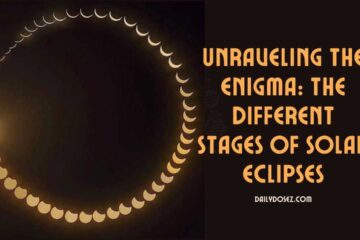The universe is an awe-inspiring expanse, dotted with countless galaxies that captivate our imaginations. Among these celestial wonders, seven galaxies stand out as the most prominent and captivating. In this article, we will embark on a cosmic journey to discover the seven main galaxies and delve into their unique characteristics. From the ethereal beauty of the Andromeda Galaxy to the enigmatic whirlpool of the Pinwheel Galaxy, each galaxy holds its own allure and secrets.
The Milky Way
The Milky Way, our home galaxy, takes center stage in our exploration. It is a spiral galaxy, with a prominent central bar and spiral arms stretching outward. It is estimated to contain over 200 billion stars, including our very own Sun. As we gaze upon the Milky Way on a clear night, we witness only a fraction of its vastness and splendor. The Milky Way is an essential guidepost in our quest to understand the universe.
Andromeda Galaxy (M31)
The Andromeda Galaxy, also known as Messier 31 (M31), is the closest spiral galaxy to the Milky Way. It is a majestic sight, spanning over 220,000 light-years and containing approximately one trillion stars. Its spiral arms embrace a radiant core, captivating astronomers and stargazers alike. The Andromeda Galaxy is on a collision course with the Milky Way, and the eventual merger will transform the cosmic landscape of both galaxies.
Triangulum Galaxy (M33)
Located approximately 3 million light-years from Earth, the Triangulum Galaxy (M33) shines as the third prominent galaxy in our list. It is a smaller spiral galaxy, intricately adorned with glowing gas clouds and young, bright stars. Although less massive than the Milky Way and Andromeda, the Triangulum Galaxy still possesses an alluring beauty that beckons us to explore its secrets.
Centaurus A (NGC 5128)
As we venture beyond our local galactic group, the elliptical galaxy known as Centaurus A (NGC 5128) comes into view. Located around 13 million light-years away, this peculiar galaxy boasts a striking dust lane across its middle, formed by the collision of two galaxies. Emitting intense radio waves and X-rays, Centaurus A reveals the remnants of its cataclysmic past and serves as a remarkable spectacle for astronomers.
Whirlpool Galaxy (M51)
The Whirlpool Galaxy (M51) is a mesmerizing spiral galaxy located approximately 23 million light-years from Earth. Its distinctive spiral arms curl around a bright nucleus, forming a celestial whirlpool. M51’s intricate structure is the result of its gravitational interaction with a smaller companion galaxy. This galactic duo presents an intriguing example of the interplay between celestial bodies within the vastness of the universe.
Sombrero Galaxy (M104)
The Sombrero Galaxy (M104) owes its name to its remarkable resemblance to a wide-brimmed hat. Located about 28 million light-years away, this elliptical galaxy exhibits a prominent dust lane that encircles its bright core, creating a striking visual contrast. The Sombrero Galaxy represents a mesmerizing interplay between elliptical and spiral galaxies, providing astronomers with valuable insights into the variety of galactic forms.
Cigar Galaxy (M82)
Concluding our exploration, we encounter the Cigar Galaxy (M82), a starburst galaxy situated approximately 12 million light-years from Earth. This irregular galaxy showcases intense star formation, which gives rise to its elongated shape. The Cigar Galaxy’s tumultuous nature results from gravitational interactions with its nearby neighbor, M81. Its energetic bursts of activity make it a subject of great interest for scientists studying galactic evolution.
Conclusion
The universe brims with countless galaxies, each with its own captivating features and mysteries. In our cosmic journey, we have unveiled the wonders of the Milky Way, the grandeur of Andromeda, the allure of the Triangulum Galaxy, and the intriguing formations of Centaurus A, the Whirlpool Galaxy, the Sombrero Galaxy, and the Cigar Galaxy. Exploring these main galaxies reveals the vastness, diversity, and splendor of our cosmic neighborhood. As we continue to gaze at the night sky, let us appreciate the immense beauty and complexity of the galaxies that grace our celestial canvas.




